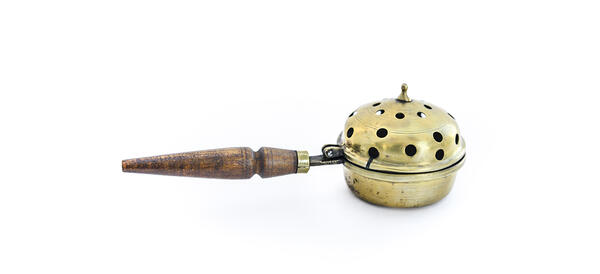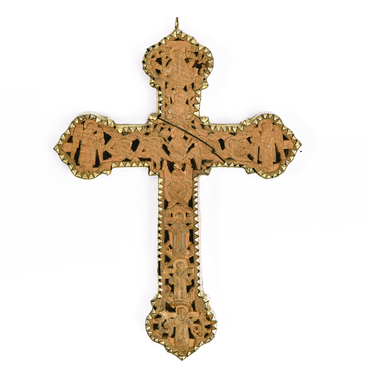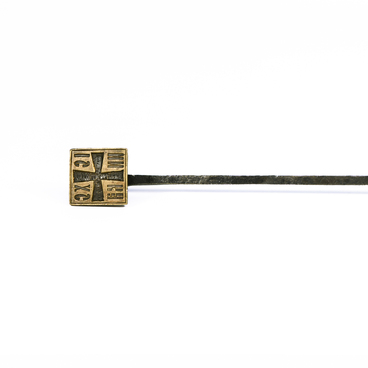A censer is used during most services in Orthodox churches. A censer is a special metal vessel made for burning coal with incense, a type of resin producing a fragrant odor. The vessels and censers are kept in a special niche. The process of incense burning is accompanied by obligatory prayer.
The censer from the collection of the Tobolsk Museum-Reserve looks like a small ladle or bowl with a long wooden handle. The main part, a round-shaped body, is made of yellow metal and consists of two parts. The upper half is hinged, it has small round holes that allow air in and smoke out. It is decorated with thin rims. The upper and lower parts are connected by a hinge.
A ladle censer was considered a simpler device than a thurible with a lid hanging on a chain. The version with a long handle was used most often in monastic cells or at home. When censing, the device was moved in the air in such a way as if to make an imaginary sign of the cross in front of the icons.
Most often hand censers were made of metal — copper or bronze. The handle had a wooden cover so it would be less heated by coals and hot smoke. The simplest models were made of clay or stone. Similar censers are still used in Greek Orthodox churches — they are called “hand-censers” there. In Russia, they are still used by the Old Believers, who perform services without priests. Sometimes such censers are set over the iconostasis as incense burners, and the embers in them smolder constantly.
In the modern liturgical canon, there are two types of censing: full and short. During the full ceremony, the censing is performed around the whole temple. This variant symbolizes the grace of the Holy Spirit, which is believed to descend on the people praying during the service. The short one is intended for God and is held only in the altar and near the iconostasis, where the sacred objects of the Church are kept. The coals in the censer symbolize the human nature of Christ, the fire is his divine essence, and the fragrant incense is the prayer that ascends to heaven. In response to each act of censing the congregation must bow.
The censer from the collection of the Tobolsk Museum-Reserve looks like a small ladle or bowl with a long wooden handle. The main part, a round-shaped body, is made of yellow metal and consists of two parts. The upper half is hinged, it has small round holes that allow air in and smoke out. It is decorated with thin rims. The upper and lower parts are connected by a hinge.
A ladle censer was considered a simpler device than a thurible with a lid hanging on a chain. The version with a long handle was used most often in monastic cells or at home. When censing, the device was moved in the air in such a way as if to make an imaginary sign of the cross in front of the icons.
Most often hand censers were made of metal — copper or bronze. The handle had a wooden cover so it would be less heated by coals and hot smoke. The simplest models were made of clay or stone. Similar censers are still used in Greek Orthodox churches — they are called “hand-censers” there. In Russia, they are still used by the Old Believers, who perform services without priests. Sometimes such censers are set over the iconostasis as incense burners, and the embers in them smolder constantly.
In the modern liturgical canon, there are two types of censing: full and short. During the full ceremony, the censing is performed around the whole temple. This variant symbolizes the grace of the Holy Spirit, which is believed to descend on the people praying during the service. The short one is intended for God and is held only in the altar and near the iconostasis, where the sacred objects of the Church are kept. The coals in the censer symbolize the human nature of Christ, the fire is his divine essence, and the fragrant incense is the prayer that ascends to heaven. In response to each act of censing the congregation must bow.



